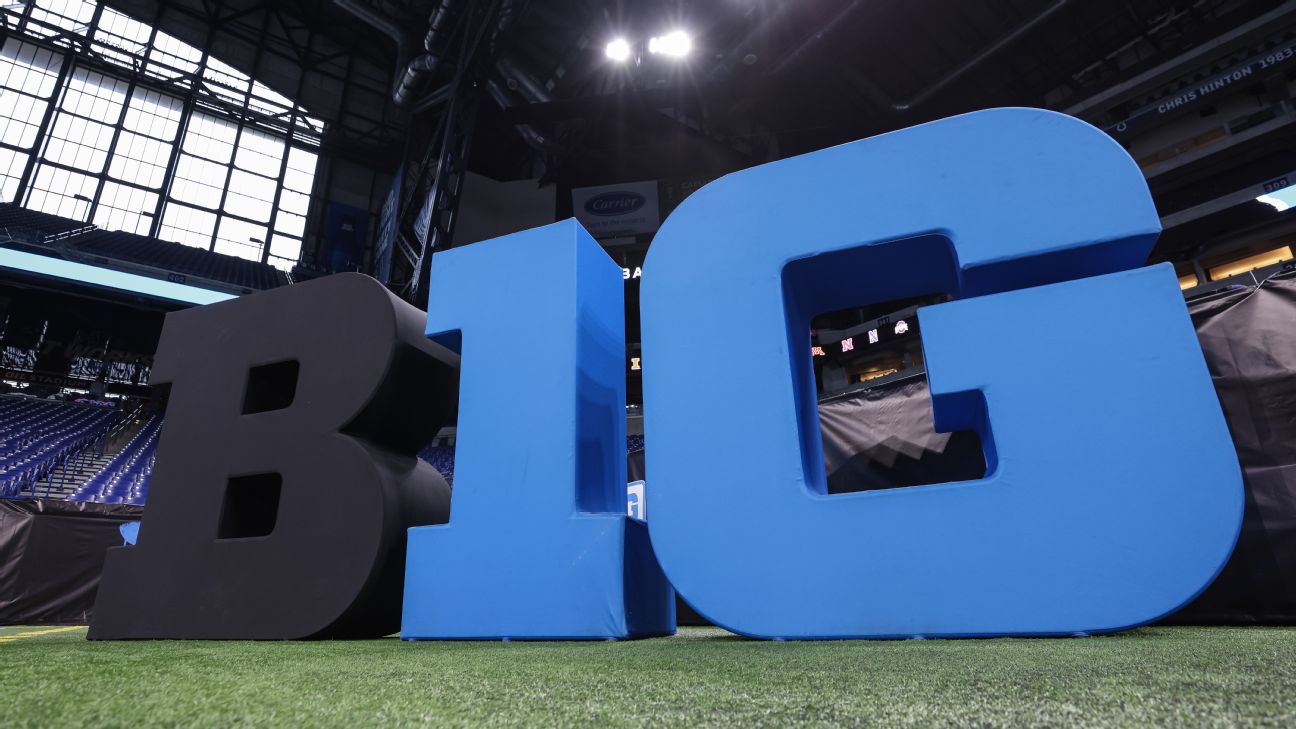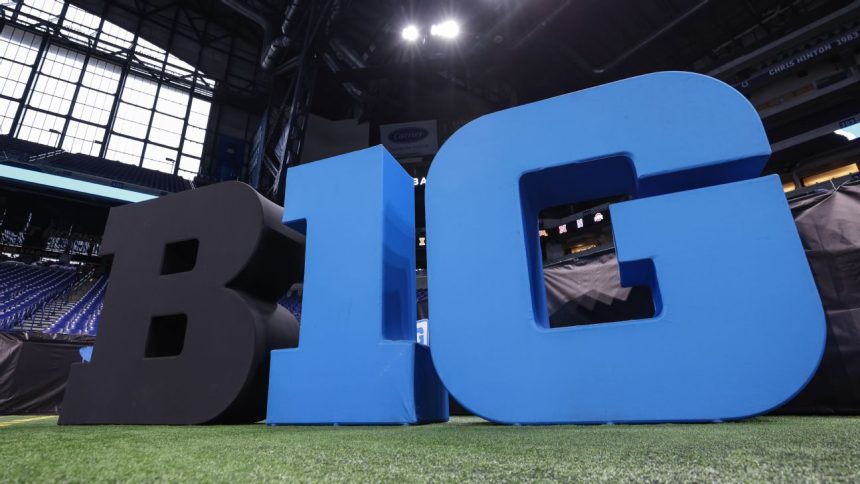
The Big Ten’s exploration of potential expansion, which the league generally acknowledged Wednesday, underscores the fragility of the overall collegiate landscape and casts a pall over the future of the Pac-12.
In the wake of a Yahoo Sports report Wednesday that the Big Ten has begun “exploratory discussions” about potential additions, the Big Ten said in a statement: “It’s also commissioner’s job to keep conference chancellors and presidents informed about new developments as they occur.”
That statement hints at the instability in the Pac-12, which lost Colorado to the Big 12 last week. The league was presented a primarily Apple streaming deal Tuesday that was met with tepid reactions because of issues with exposure and guaranteed money.
That leaves nine schools pondering their options, along with an uncertainty around the Pac-12 that prompted the Big Ten to begin formal due diligence, sources confirmed to ESPN. The Big Ten’s discussions are centered on Washington and Oregon, sources told ESPN.
“Discussions are happening,” an industry source told ESPN. “It’s hard to assess when it would/will happen. At this point, it’s now logical for all parties. I think if something happens, it’ll be pretty quickly.”
ESPN reported on Monday that Big Ten commissioner Tony Petitti had begun quiet diligence on Washington and Oregon. Sources indicated that effort has ramped up throughout the week, although there’s some patience to see how things unfold in the Pac-12.
Although there’s some presidential interest in adding Cal and Stanford, those potential additions were met with chilly responses last year when the Big Ten pondered adding more teams, in part because of their lack of television resonance. Stanford’s addition to the Big Ten has long been paired to a potential Notre Dame addition, which doesn’t appear imminent at this point.
A key facet of Washington and Oregon coming to the Big Ten at this juncture, according to sources, is that they would likely be able to come in at a partial share. Big Ten schools project an average annual value of more than $60 million per year in just television money through the length of the Big Ten deal. It’s unknown what the league would look to bring in Washington and Oregon for.
Washington’s and Oregon’s conference predicament would likely have them come in below that $60 million figure, then ramp up and aim for a full share when the current television deal expires. It’s uncertain whether a new media partner would be needed to add just two schools, given that there already are four partners in the deal — Fox, CBS, NBC and Big Ten Network — and the fact that the new schools likely wouldn’t be getting a full television share.
The addition of two schools ultimately would come down to about 13 football games, depending on schedules.
There are potential headwinds for the additions. USC had been a strong opponent of allowing other West Coast schools into the Big Ten under former athletic director Mike Bohn, as a key part of USC’s initial strategy entering the league was to keep other western schools out of the Los Angeles recruiting market.
Big Ten presidents also could see more academic synergy in looking east, as Virginia and North Carolina are both coveted by the SEC and Big Ten because they offer new markets, big cities and fertile recruiting grounds.
It appears that part of the fragile truce holding together the collegiate landscape might be deteriorating. A reason for the reluctance of Arizona to join the Big 12 matched what Big Ten sources said about that league’s hesitancy to approach Washington and Oregon — no one wanted to be the reason the Pac-12 fell apart.
As the Pac-12 schools ponder taking the television deal commissioner George Kliavkoff presented to them Tuesday morning, one source predicted that rationale might soon fade away.
“I don’t think anyone is poaching now,” an industry source said. “These schools are looking for a home.”










